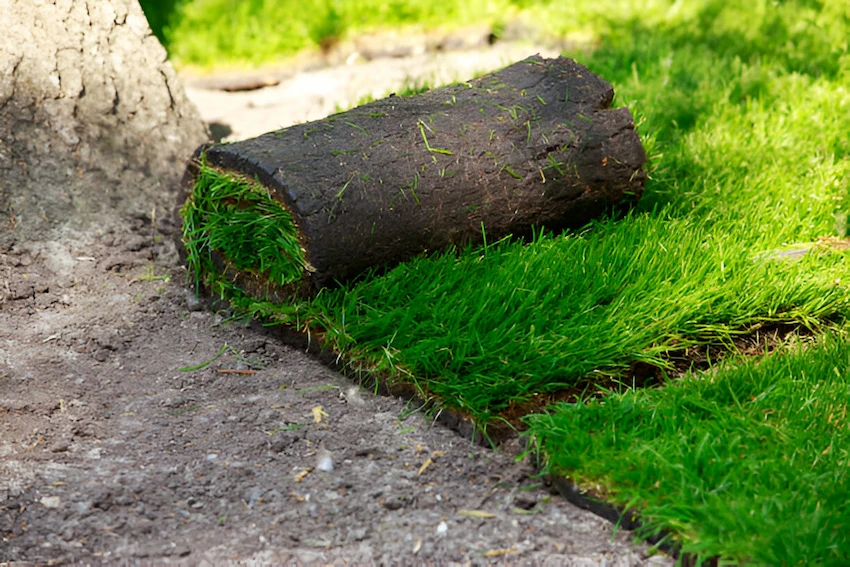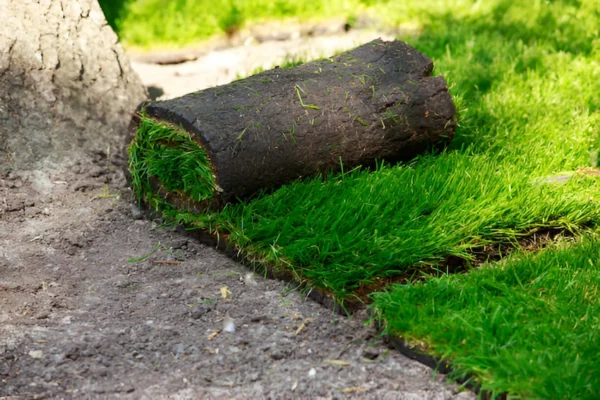In landscaping, the importance of a well-manicured lawn cannot be overstated. A beautiful lawn not only enhances the aesthetic appeal of a property but also provides a space for recreation and relaxation. One of the most efficient and effective ways to achieve a lush, green lawn is using grass in a landscaper’s roll. This method has revolutionized landscaping, offering a quick and reliable solution for residential and commercial properties. This article will explore the benefits, application processes, and maintenance tips for using grass in a landscaper’s role to create stunning outdoor spaces.

The Advantages of Grass in a Landscaper’s Roll
Instant Transformation
One of the primary benefits of using grass as a landscaper is the immediate transformation it provides. Unlike traditional seeding methods, which can take weeks or even months to establish, rolled grass offers an instant lawn. This is particularly beneficial for homeowners and businesses looking to enhance their curb appeal quickly.
Uniform Appearance
Grass in a landscaper’s roll is grown under controlled conditions, ensuring a uniform and consistent appearance. This uniformity is often difficult to achieve with seeded lawns, which can result in patchy and uneven growth. The use of rolled grass ensures a smooth, seamless look that enhances the overall aesthetics of the landscape.
Weed Control
Weeds can be a major issue in traditionally seeded lawns, but grass in a landscaper’s role offers a significant advantage. The dense, healthy sod prevents weeds from establishing themselves, reducing the need for herbicides and ongoing weed control measures. This leads to a cleaner, more attractive lawn with less maintenance required.
How to Lay Grass in a Landscaper’s Roll
Preparing the Soil
Preparing the soil is the first step in laying grass in a landscaper’s roll. This involves removing vegetation, rocks, and debris from the area. The soil should be tilled and leveled to create a smooth, even surface. Adding a layer of topsoil can also enhance the growth of the new grass. Discover the top 6 best Landscape Places in the World
Laying the Sod
Once the soil is prepared, it’s time to lay the sod. Begin by unrolling the first grass strip along a straight edge, such as a walkway or driveway. Subsequent rolls should be placed tightly against the previous ones, ensuring no gaps between the strips. Stagger the seams in a brick-like pattern to create a more natural look and to prevent erosion.
Watering and Fertilizing
After the sod is laid, it’s crucial to water it thoroughly to help it establish roots. The first watering should be deep and thorough, ensuring the soil beneath the sod is moist. Regular watering should continue for the first few weeks, gradually tapering off as the grass becomes established. Fertilizing with a balanced lawn fertilizer can also promote healthy growth.
Maintaining Your New Lawn
Mowing
Proper mowing is essential for maintaining the health and appearance of your grass in a landscaper’s role. The first mowing should be done once the grass has reached about three inches in height. Set the mower blades to a high setting to avoid cutting the grass too short. Regular mowing will help maintain a neat appearance.
Irrigation
Consistent watering is key to keeping your new lawn lush and green. During the initial establishment period, water the lawn regularly to ensure the roots grow deep into the soil. Once established, a deep watering once or twice a week should be sufficient, depending on weather conditions.
Pest and Disease Control
While grass in a landscaper’s roll is generally resilient, it’s important to watch for signs of pests and diseases. Regular inspection and prompt treatment can prevent minor issues from becoming major problems. Using organic pest control methods and maintaining proper lawn care practices can minimize the need for chemical treatments.
Conclusion
Using grass in a landscaper’s role is a game-changer in landscaping. Its ability to provide an instant, uniform, and weed-resistant lawn makes it an attractive option for homeowners and commercial properties. You can enjoy a beautiful and healthy lawn with minimal effort by following the proper preparation, installation, and maintenance techniques. Embrace the convenience and beauty of grass in a landscaper’s roll and transform your outdoor spaces into stunning landscapes.
FAQ’s
Can I lay grass in a landscaper’s role, or should I hire a professional?
While laying grass in a landscaper’s roll is possible, hiring a professional can ensure the job is done correctly and efficiently. Professionals have the expertise and equipment to prepare the soil, lay the sod, and provide proper aftercare.
How much does grass in a landscaper’s roll cost?
The cost of grass in a landscaper’s roll can vary depending on the type of grass, the size of the area, and local market conditions. On average, you can expect to pay between $1 to $3 per square foot, including installation.
Can grass in a landscaper’s roll be laid at any time of the year?
The best time to lay grass in a landscaper’s roll is during the cooler months of spring and fall when temperatures are moderate and the risk of heat stress is lower. However, with proper care and attention, it can be installed at any time of the year.
How do I prevent weeds from growing on my new lawn?
Due to its dense growth, grass in a landscaper’s roll provides excellent weed control. However, maintaining a healthy lawn through regular mowing, watering, and fertilizing can further reduce the risk of weeds. Additionally, promptly removing any weeds that do appear can prevent them from spreading.








